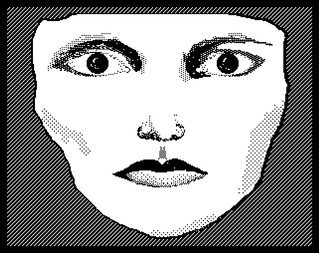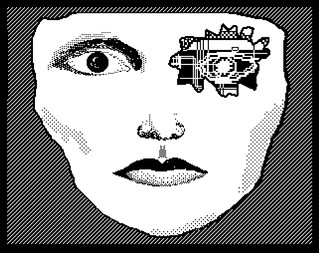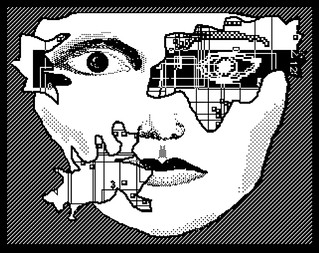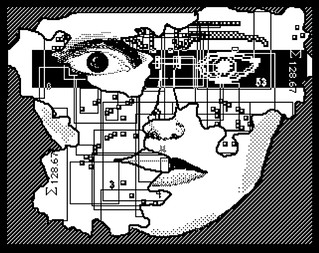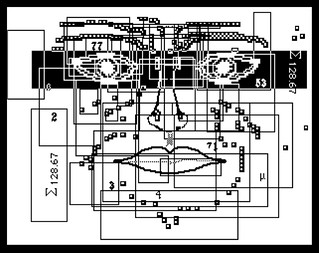by Bill Benzon
“The interests of humanity may change, the present curiosities in science may cease, and entirely different things may occupy the human mind in the future.” One conversation centered on the ever accelerating progress of technology and changes in the mode of human life, which gives the appearance of approaching some essential singularity in the history of the race beyond which human affairs, as we know them, could not continue.
–Stanislaw Ulam, from a tribute to John von Neumann
In scientific prognostication we have a condition analogous to a fact of archery–the farther back you are able to draw your longbow, the farther ahead you can shoot.
R. Buckminster Fuller, Critical Path
Let’s get started:
- A week ago The Guardian published a long piece in which Pankaj Mishra argued that the Western world no longer provides a model the rest of the world should or even can follow, if it ever had.
- A couple of weeks ago polymath David Byrne asserted that he’d lost interest in contemporary art, feeling it had devolved into “inoffensive tchotchkes for billionaires and the museums they fund,” a sentiment that the late Robert Hughes had been promulgating for some years.
- Back in 1996 science journalist John Horgan published The End of Science, in which he argued that many fields of science had reached a point where they were no longer intellectually productive. The big problems had been solved, more or less, and further investigations seemed to be running in circles without any clear sense of progress.
Not only am I sympathetic which each of these ideas, I think they all reflect the same underlying cause: the wellsprings of old ideas – about social organization, artistic expression, and scientific explanation, certainly, but also about fiction, legal codes, economics, education, music, gender and family, and a host of others – have run dry and new ones have not yet been discovered.
I’m quite familiar with this phenomenon in the case of literary studies, where I received my graduate training. The French landed in Baltimore in the Fall of 1966 and catalyzed three decades of intellectual invention. The invention all but stopped about twenty years ago, leaving literary studies afflicted with a sense of malaise that goes deeper than budget cuts and umbrage taken at silly articles in which humorists of The New York Times take potshots at papers presented at the annual convention of the Modern Language Association.
How could new ideas just stop? Have people gotten stupid or is something else going on? If so, what?
What’s going on is something that that late David Hays and I call “rank shift”, which is a generalization over what happened several millennia ago in the transition to agricultural economies run by literate elites living in walled cities and again several hundred years ago with the emergence of modern science, mercantilism and capitalism, and the nation state. Of course get no points for saying “it’s happening again folks” because everyone knows that. What we lay claim to is a fairly specific set of proposals about how such transitions are grounded in mechanisms of thought.
Certain mechanisms inhere in human biology, mechanisms which have evolved through millions upon millions of years. Those mechanisms eventuated in language. Whether or not spoken language should be considered biologically innate is a matter of much contemporary debate, but no one argues that writing, arithmetic and algebra, or computing are innate. They’re clearly within the province of culture and they enable us to bootstrap ever more powerful mechanism of thought into the same basic biological apparatus.
The Human Mind and Its Cultural Elaboration
When the work of developmental psychologist Jean Piaget finally made its way into the American academy in the middle of the last century the developmental question became: Is the difference between children’s thought and adult thought simply a matter of accumulated facts or is it about fundamental conceptual structures? Piaget, of course, argued for the latter. In his view the mind was constructed in “layers” where the structures of higher layers were constructed over and presupposed those of lower layers. It’s not simply that 10-year olds knew more facts than 5-year olds, but that they reasoned about the world in a more sophisticated way. No matter how many specific facts a 5-year old acquires, he or she cannot think like a 10-year old because he or she lacks the appropriate logical forms. Similarly, the thought of 5-year olds is more sophisticated than that of 2-year olds and that of 15-year olds is more sophisticated than that of 10-year olds.
This is, by now, quite well known and not controversial in broad outline, though Piaget’s specific proposals have been modified in many ways. What’s not so well known is that Piaget extended his ideas to the development of scientific and mathematical ideas in history in the study of genetic epistemology. In his view later ideas developed over earlier ones through a process of reflective abstraction in which the mechanisms of earlier ideas become objects manipulated by newer emerging ideas. In a series of studies published in the 1980s and 1990s the late David G. Hays and I developed similar ideas about the long-term cultural evolution of ideas.
We theorized about cognitive ranks, where later ranks developed over earlier ones through reflective abstraction (see articles listed in the appendix). The basic idea of cognitive rank was suggested by Walter Wiora’s work on the history of music, The Four Ages of Music (1965). He argued that music history be divided into four ages. The first age was that of music in preliterate societies and the second age was that of the ancient high civilizations. The third age is that which Western music entered during and after the Renaissance. The fourth age began with this century. (For a similar four-stage theory based on estimates of informatic capacity, see for example D. S. Robertson, The Information Revolution. Communication Research 17, 235-254.)
This scheme is simple enough. What was so striking to us was that so many facets of culture and society could be organized into these same historical strata. It is a commonplace that all aspects of Western culture and society underwent a profound change during the Renaissance. The modern nation state was born, the scientific revolution happened, art adopted new forms of realistic depiction, attitudes toward children underwent a major change, as did the nature of marriage and family, new forms of commerce were adopted, and so forth. If we look at the early part of our own century we see major changes in all realms of symbolic activity—mathematics, the sciences, the arts—while many of our social and political forms remain structured on older models.
The transition between preliterate and literate societies cannot easily be examined because we know preliterate societies only by the bones and artifacts they've left behind and the historical record of the ancient high civilizations is not a very good one. Instead we have to infer the nature of these ancient cultures by reference to modern anthropological investigations of preliterate cultures (just as biologists must often make inferences about the anatomy, physiology, and behavior of extinct species by calling on knowledge of related extant species). When we make the relevant comparisons we see extensive differences in all spheres.
Social order in preliterate societies may involve nothing more than family relationships, or at most the society extends kinship by positing ancient common ancestors. With little or no apparatus of government, civil order is maintained by feud or fear of feud. In literate societies, social order is kept by etiquette, contract, and courts of equity, and civil order is maintained by police and courts of justice. In preliterate societies each community, of 5 to 500 members (and generally less than 200) is autonomous until, about 6000 years ago, chiefdoms appear in a few places: groups of villages forced into submission. In literate societies villages grow into towns and cities, which organize the villages of their hinterlands into kingdoms. Preliterate societies depend on the skills of hunting and gathering, of slash-and-burn farming, pottery, and a few more crafts, which are sound and effective where they exist. In literate societies certain persons trained to think choose to think about farming and write manuals for the agrarian proprietor – and eventually manuals of other crafts appear. Finally, Lawrence Kohlberg has found evidence that people in preliterate societies have less sophisticated moral concepts than people in literate societies.
The appearance of writing was followed by the Mosaic law and the prophets of Israel, and by the Periclean Age in Athens. The architecture, democratic political system, and above all the philosophy ¬– both natural and moral – of the Hebrews and Greeks was so different from all predecessors that we tend to think of our civilization as beginning with them. In fact, a period of cultural regression followed the fall of Rome and before the Renaissance could begin a “little renaissance” beginning about A.D. 1000 and reaching its peak with Aquinas in the 13th Century was necessary to raise Europe once more to a literate level. Our civilization combines elements of Greek, Roman, and Hebrew antiquity with Moslem, Indian, Chinese, and Germanic elements.
Socio-Cultural Singularities
Hays and I believed that these ages, the systematic differences between cultures at these levels of cultural evolution, are based on differences in conceptual machinery. As cultures evolve they differentiate and become more complex and sophisticated, the more sophisticated cultures having cognitive mechanisms unavailable to the less sophisticated. Over the long term this process is discontinuous; it passes through singularities in the sense of Ulam and von Neumann. People on the old side of a socio-cultural singularity cannot imagine the world of people on the near side.
The post-singularity modes of thought and action permit a dramatic reworking of culture and society, a reworking that is ultimately engendered by a new capacity for manipulation of abstractions. The thinker/artist/social actors on different sides of these singularities are thus operating with different ontologies – to use a philosophical term that entered computer science and AI in the last few decades – from that employed by the older ones. The new ideas and practices cannot be reduced to strings of ideas stated within the old ontology, though crude approximations are often possible. Indeed, science and technological journalists use such crude approximations to convey the newer ideas to a general audience. But those approximations do not give you the ability to use the newer ideas in a powerful way.
These several kinds of thinking are cumulative; a simpler kind of thinking does not disappear from a culture upon the introduction of a more complex kind. A culture is assigned a rank according to the most sophisticated kind of thinking available to a fraction of its population that is substantial enough to regulate the overall affairs of society. That a culture is said to be of Rank 3 thus doesn’t imply that all adult members have a Rank 3 system of thought. It means only that an influential group, a managing elite if you will, operates with a Rank 3 cognitive system. The rest of the population will mostly have Rank 1 and Rank 2 conceptual systems.
Each cognitive process is associated with a new conceptual mechanism, which makes the process possible, and a new conceptual medium that allows the mechanism and process to become routine in the culture. This is an important point. The general effectiveness of a culture is not determined only by the achievements of a few of its most gifted members. What matters is what a significant, though perhaps small, portion of the population can achieve on a routine basis. The conceptual medium allows for the creation of an educational regime through which a significant portion of the population can learn effectively to exploit the cognitive process, can learn to learn in a new way.
Here is the scheme Hays and I proposed:
| Process | Mechanism | Medium | |
|---|---|---|---|
| Rank 1: | Abstraction | Metaphor | Speech |
| Rank 2: | Rationalization | Metalingual Definition | Writing |
| Rank 3: | Theory | Algorithm | Calculation |
| Rank 4: | Model | Control | Computation |
In an earlier paper (Principles and Development of Natural Intelligence, see the appendix) we argued that the human brain is organized into five layers of perceptual and cognitive processors. We called the top layer the gnomonic system and thought of it as organizing the interaction between the lower four layers. All abstractions form in the gnomonic system. The cognitive processes that concern us here are all regulated by this gnomonic system. Hence for our present purposes it is convenient to collapse this system into a two-level structure, with the gnomonic layer on top in an abstraction system and the other four layers on the bottom, collectively, the concrete system.
With a Rank 2 structure, Aristotle was able to write his philosophy. He presented it as an analysis of nature but we take it to be a reconstruction of the prior cognitive structure. In the Renaissance, some thinkers developed cognitive structures of rank 3. Exploitation of such structures produced all of science up through the late nineteenth century.
Beginning, perhaps, with Darwin and going on to Freud, Einstein, and many others, a new kind of cognitive process appears. To account for it, we call on rank 4 processes. We understand earlier science to be a search for the one true theory of nature, whereas we understand the advanced part of contemporary science to be capable of considering a dozen alternative theories of nature before breakfast (with apologies to Lewis Carroll). The new thinker can think about what the old thinker thought with. And indeed we use that sentence to summarize the advance of each cognitive rank over its predecessor.
The Singularity in Which We Swim
Let’s begin assessing our current situation by looking at the observed course of cultural evolution to date. We’re interested in the transition from one rank to the next and the interval between one rank-shift, or singularity, and the next. When looking at the following table, keep in mind that these transitions are not sharp; they take time. All we’re after, though, is a crude order of magnitude estimate:
| Informatics | Emergence, years ago | |
|---|---|---|
| Rank 1 | Speech | 50,000 |
| Rank 2 | Writing | 5,000 |
| Rank 3 | Calculation | 500 |
| Rank 4 | Computing | 50 |
The transition time from one rank to the next seems to have gone down by an order of magnitude for each transition.
One does not have to look at those numbers for very long before wondering just what started emerging five years ago. While there is nothing in the theory that forbids the emergence of a fifth, or a sixth rank, and so on, it doesn’t seem plausible that the time between ranks can continue to diminish by an order of magnitude. The emergence of a new system of thought, after all, does not appear by magic. People have to think it into existence: How much time and effort is required to transcend the system of thought in which a person was raised? THAT limits just how fast new systems of thought can arise.
And, THAT, I believe, is where we are, all of us. In one way or another every society on earth is undergoing major changes, but the nature of those changes depends on the prior history of that society. By the end of the 19th Century every society had come under the influence of imperial empires based in Europe whether through direct or indirect rule, as in the case of the British Empire, or simply had been forced to deal with Europe and/or the United States, as was the case with Japan.
Japan is an interesting and important case because it was never conquered by a Western power. Indeed, by the middle of the previous century Japan had grown powerful enough to challenge the West, a challenge that lead to defeat in World War II.
But how do we think about what the Japanese have accomplished in that time? Has Japan become westernized? Is that what’s happening in the non-European world, westernization? Christopher Goto-Jones poses that question in the introduction to Modern Japan: A Very Short Introduction (2009). He poses it in terms of modernity (p. 9):
In particular, the concept of the modern seems to share the Enlightenment project’s faith in progress and its aspirations towards the universalism of its maxims. However, it is important to remember that there is a difference between observing the historical origins of this cluster of ideas in Europe and claiming that the ideas themselves are somehow essentially European possessions.
They are not, of course. They “belong” to anyone and any society who masters them.
Goto-Jones goes on to observe that some Japanese have wanted to reject “all the trappings of modernity in the name of rejecting Westernization”, others wanted to blend aspects of modernity with Japanese traditions, while still others have wanted to reject all of Japanese tradition. He notes that:
In some ways, this kind of sociocultural anxiety about identity and the place of tradition in society is one of the marks of the modern era, not only in Japan but everywhere. The modern era is not only characterized by great advances in science, but also by social anomie and political protest.
And that leads us back to where we began, with Pankaj Mishra’s argument that, whatever it is that’s happening in the world today, it’s not westernization.
Culture is not a homogenous substance exuded by nation states. It is a body of ideas, expressive forms, and social techniques and, in the contemporary world, the ideas, expressive forms, and social techniques that operate in a given place may have originated anywhere in the world. The processes of reflective abstraction are inherent in the human mind and so can operate on any extant body of ideas, expressive forms, and social techniques.
The observations I’ve cited from Byrne – the emptiness of contemporary art – and Horgan – the exhaustion of science – suggest that “the West” is pushing the limits of its stock of ideas and techniques. Does the future belong to cultural forms originating in the rest of the world as, indeed, Europe drew on Chinese and Indian mathematics by way of the Iranian scholar Al-Khwārizmī at the beginnings of its modernization, its Renaissance?
Appendix: The Theory of Cultural Ranks
Most of what Hays and I have written about cultural rank is available at this website: Mind-Culture Coevolution: Major Transitions in the Development of Human Culture and Society: http://asweknowit.ca/evcult/
These are the major essays, most of which can be downloaded in PDF form:
William Benzon and David Hays, Principles and Development of Natural Intelligence. Journal of Social and Biological Structures 11, 293 – 322, 1988. http://www.academia.edu/235116/Principles_and_Development_of_Natural_Intelligence
This one is not about culture; it’s about biology. It’s a prelude to the rest in that it lays out the biological underpinnings of cultural elaboration.
William Benzon and David Hays, The Evolution of Cognition. Journal of Social and Biological Structures 13, 297-320, 1990. https://www.academia.edu/243486/The_Evolution_of_Cognition
Much of this post is based on this article, which is our basic statement. The article has full citations for the ideas and observations in the sections of this post on the human mind and culture and on cultural singularities.
William Benzon, The Evolution of Narrative and the Self. Journal of Social and Evolutionary Systems, 16(2): 129-155, 1993. https://www.academia.edu/235114/The_Evolution_of_Narrative_and_the_Self
William Benzon, Stages in the Evolution of Music. Journal of Social and Evolutionary Systems, 16(3): 283-296, 1993. https://www.academia.edu/8583092/Stages_in_the_Evolution_of_Music
David Hays, The Evolution of Expressive Culture. Journal of Social and Evolutionary Systems, 15: 187-215, 1992. http://asweknowit.ca/evcult/Express.shtml
David Hays, The Evolution of Technology Through Four Cognitive Ranks. White Plains, NY: Connected Education, 1993. http://asweknowit.ca/evcult/Tech/FRONT.shtml
This is the most extensive development of the ranks idea and contains treatments of forms of government and personality in addition to discussions of technology.
William Benzon , Culture as an Evolutionary Arena. Journal of Social and Evolutionary Systems, 19(4), 321-362, 1996. https://www.academia.edu/235113/Culture_as_an_Evolutionary_Arena
This long essay can serve as a bridge between ranks theory and the material in my last 3QD post, about direction in the evolution of 19th century English langauge novels.
William Benzon, Pursued by Knowledge in a Fecund Universe, Journal of Social and Evolutionary Systems, 20(1): 93-100, 1997. https://www.academia.edu/8790205/Pursued_by_Knowledge_in_a_Fecund_Universe
This is an essay review of Horgan’s The End of Science and sets out why I expect science to continue with the emergence of new systems of scientific thought.
Bill Benzon blogs at New Savanna.

